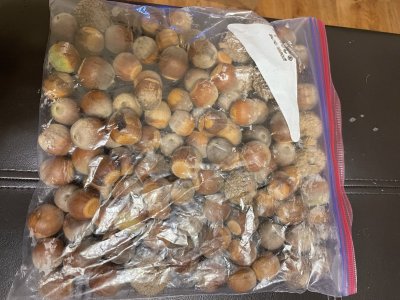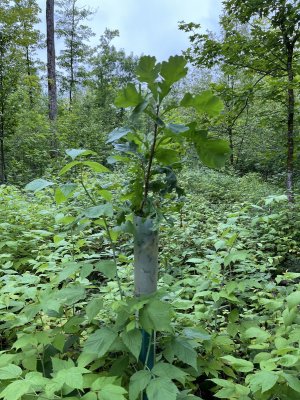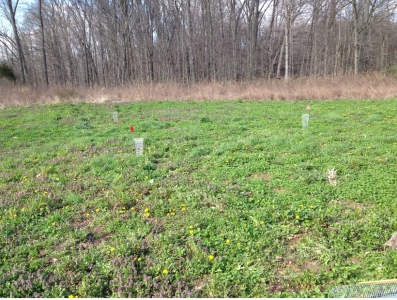So I went back and looked....
Sawtooth "catscratch" oaks
April 2017 - acorns in the ground with my "germination cages" of 18".
View attachment 46316
Same trees last week or so.... cages are 5 feet tall for reference. Best tree is probably near 15' others near or around 10'.
View attachment 46317
Treating them like fruit trees gives them every advantage.... I have others that I left to their own devices and they certainly show it. Some are only 2 feet tall now....that I didn't baby along. The other thing that I do to help is I like tall narrow cages. I prefer 5 feet tall so the deer can't reach over the top and get to the tree. I like more narrow cages so the lower branches get browsed off as they reach beyond the cage and the tree puts its energy into grow UP and not OUT. I also prune and trim when I can. Even brushy species like the sawtooths. One main leader will again focus growth where you want it. Not all of the trees cooperate....but it certainly helps. NONE of my trees have seen tree tubes and they only additional support I give my trees it to try to ensure they grow straight up. You will find after enough of them, you will find one that wants to grow sideways!




